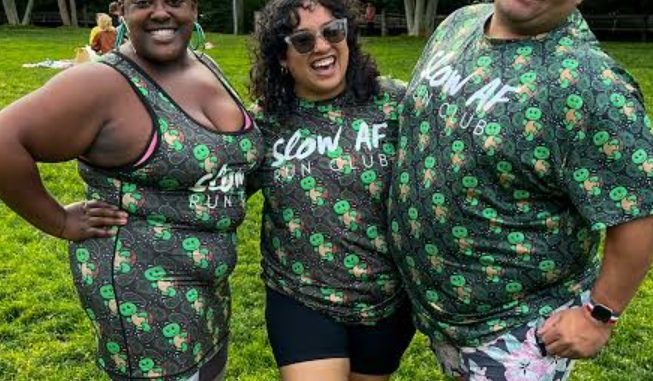
**How Runners Help Relieve Sore and Tight Hips: Latest Techniques and Strategies**

For runners, hip tightness and soreness are common complaints that can stem from the repetitive nature of running, which stresses certain muscles and joints in the lower body. Over time, this can lead to tightness in the hips, discomfort, and even injury if not properly addressed. The good news is that there are a number of effective techniques and strategies runners use to alleviate hip tightness and soreness, ensuring they stay mobile and pain-free. Below are some of the latest approaches runners are using to manage this issue:
### 1. **Hip Mobility Exercises**
Maintaining hip mobility is key to preventing tightness in the hip flexors and surrounding muscles. Runners are incorporating specific mobility exercises into their routines to stretch and open up the hip area. Popular hip mobility exercises include:
– **Hip Circles:** Rotating the hips in circular motions to increase flexibility in the hip joint.
– **Lunges with Twists:** A lunge combined with a twist to activate the hip flexors and stretch the glutes.
– **90/90 Stretch:** A seated stretch where runners place one leg in front of them at a 90-degree angle and the other leg behind them at the same angle. This opens the hips and improves mobility.
– **Frog Stretch:** This stretch targets the inner thighs and hips, easing tension in the hip adductors.
Incorporating these exercises before and after a run can improve flexibility, reduce tightness, and help prevent future discomfort.
### 2. **Foam Rolling for Hip Relief**
Foam rolling has gained popularity among runners as a self-myofascial release technique that targets sore muscles and tight fascia around the hips. By applying pressure to specific points, foam rolling helps to release muscle tension and improve blood flow.
Runners often focus on the **hip flexors**, **glutes**, **IT band**, and **hamstrings** when using a foam roller to address hip tightness. Regular foam rolling not only helps to soothe sore muscles but also promotes quicker recovery, allowing runners to stay consistent with their training.
### 3. **Strength Training for the Hips**
Weakness in the hip muscles is a major contributor to hip pain in runners. Strengthening these muscles can help runners maintain proper running form and reduce the risk of injury. Targeted strength training exercises focus on the glutes, hip flexors, and hip abductors.
Common hip-strengthening exercises include:
– **Glute Bridges:** Strengthening the gluteus maximus while also opening up the hip flexors.
– **Clamshells:** This exercise targets the hip abductors, which are important for stabilizing the hips during a run.
– **Side Leg Lifts:** These target the outer hip muscles, improving stability and strength in the region.
– **Single-Leg Deadlifts:** Helping to improve balance and strength in the hamstrings and hips.
Integrating these strength exercises into a runner’s routine can enhance overall hip function and prevent issues like tightness or discomfort.
### 4. **Stretching the Hip Flexors and Surrounding Muscles**
Runners are encouraged to incorporate stretches specifically targeting the hip flexors, quads, hamstrings, and glutes. Stretching can help lengthen tight muscles and improve flexibility. Key stretches include:
– **Hip Flexor Stretch:** Kneeling on one knee with the other foot forward, runners push their hips forward to stretch the front of the hip.
– **Pigeon Pose:** A yoga pose that stretches the glutes and hips by bringing one leg forward in a bent position while extending the other leg straight behind.
– **Standing Quad Stretch:** Pulling the heel toward the glutes while standing, to stretch the quadriceps and hip flexors.
Performing these stretches regularly, especially after a run, can help loosen up tight hips and prevent soreness from lingering.
### 5. **Yoga for Runners**
Many runners are turning to yoga as a holistic way to manage hip tightness and soreness. Yoga focuses on stretching, strengthening, and balancing the muscles, including the hips. Certain poses like **Pigeon Pose**, **Warrior I**, and **Warrior II** are particularly beneficial for opening up the hips.
Yoga can also enhance a runner’s flexibility, mobility, and mental focus, making it an excellent addition to their routine.
### 6. **Physical Therapy and Massage Therapy**
For runners dealing with chronic or severe hip tightness, professional intervention might be necessary. Physical therapists can design custom exercises to address imbalances or weaknesses contributing to hip issues. Additionally, massage therapy can help release muscle tension, improve circulation, and expedite recovery from sore hips.
Therapists often use deep tissue massage or trigger point therapy to target tight areas, providing relief and promoting healing.
### 7. **Warm-Up and Cool-Down Routines**
Runners are becoming increasingly aware of the importance of warming up before a run and cooling down afterward to reduce the risk of hip tightness. A proper warm-up increases blood flow to the muscles, preparing them for the demands of running. Dynamic stretches such as **leg swings**, **walking lunges**, and **high knees** are commonly used in warm-ups.
After a run, a cool-down period consisting of static stretches, like the ones mentioned earlier, helps to gradually lower heart rate and relax tight muscles, preventing post-run hip pain.
### 8. **Rest and Recovery**
Lastly, runners are recognizing the importance of rest in managing tight hips. Overtraining can lead to muscle fatigue, tightness, and eventual injury. Allowing time for recovery between runs gives muscles a chance to heal and adapt. Some runners also use tools like **compression garments** or **ice baths** to aid in the recovery process and reduce inflammation in sore hips.
### Conclusion
Runners with sore or tight hips can find relief through a combination of mobility exercises, foam rolling, targeted strength training, stretching, yoga, and professional therapies. By incorporating these strategies into their routine, runners can alleviate hip discomfort, improve performance, and prevent injuries, allowing them to continue their running journey with comfort and confidence.
Leave a Reply